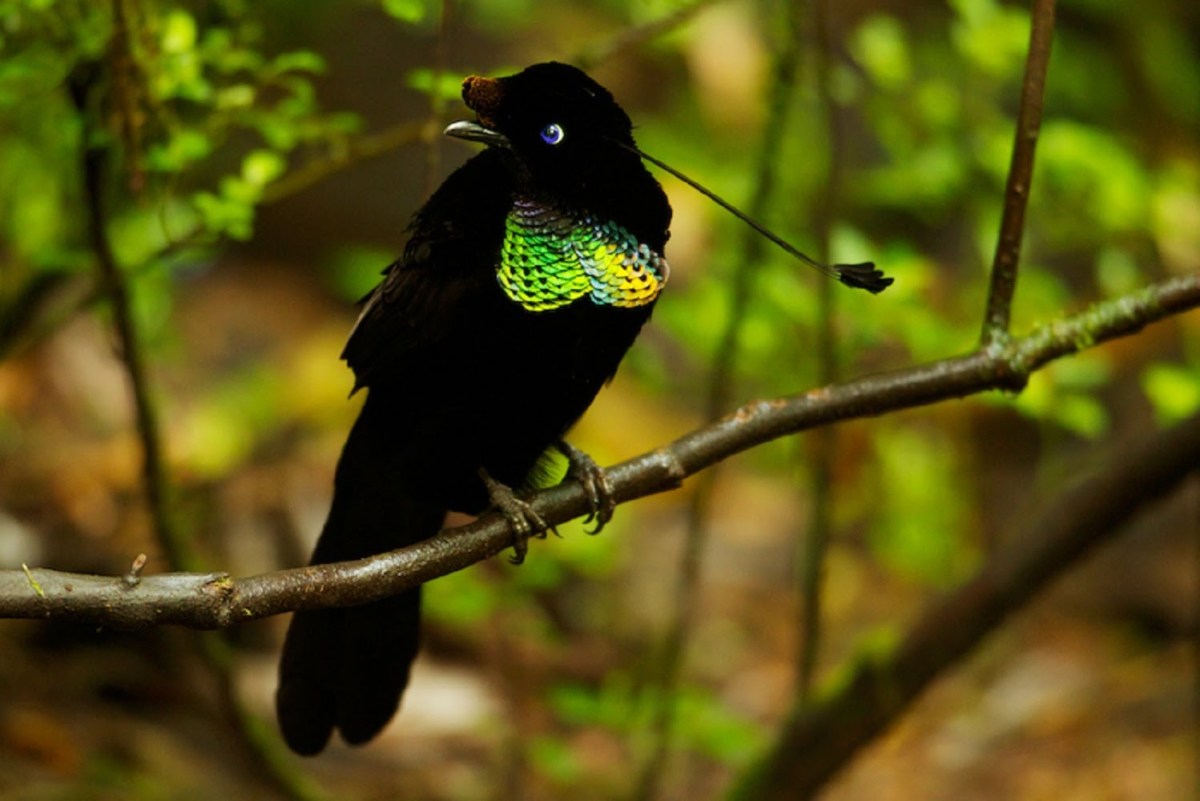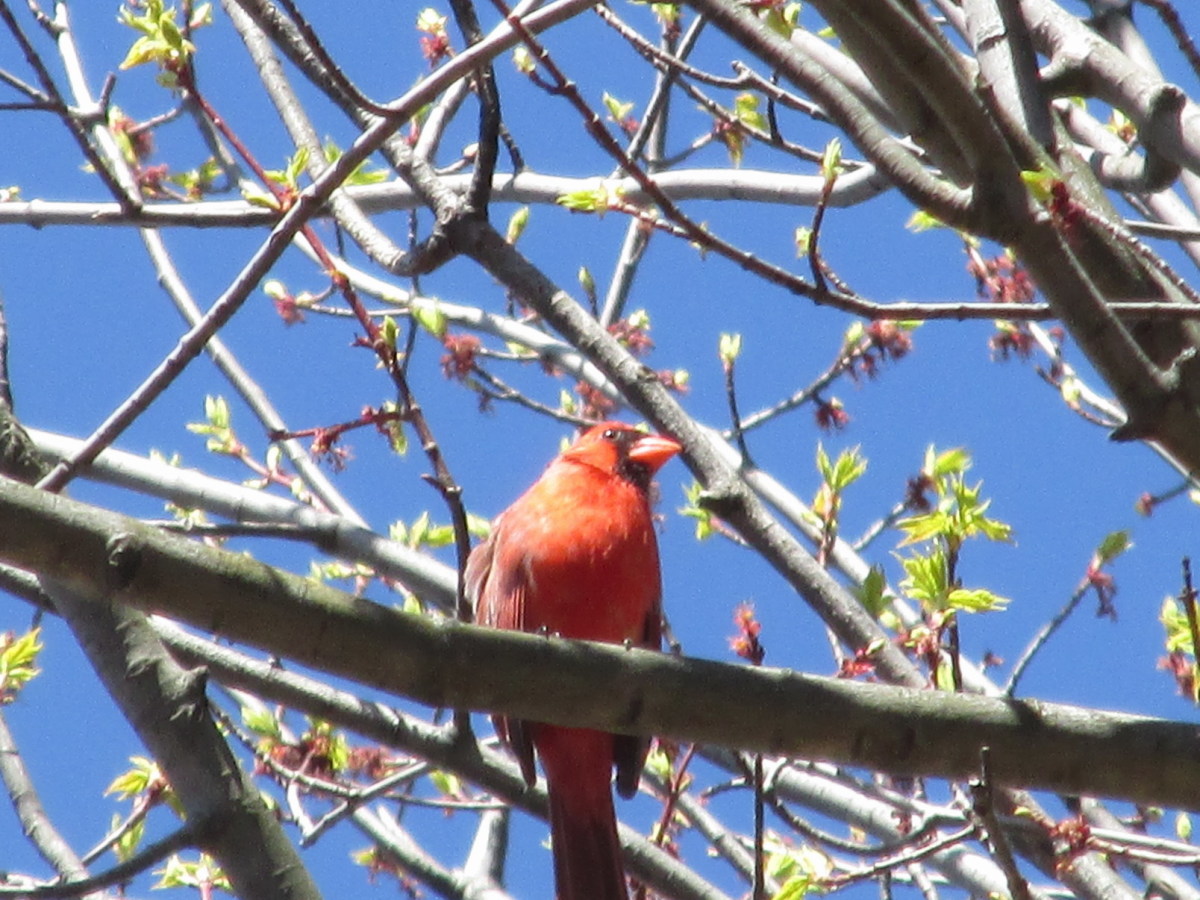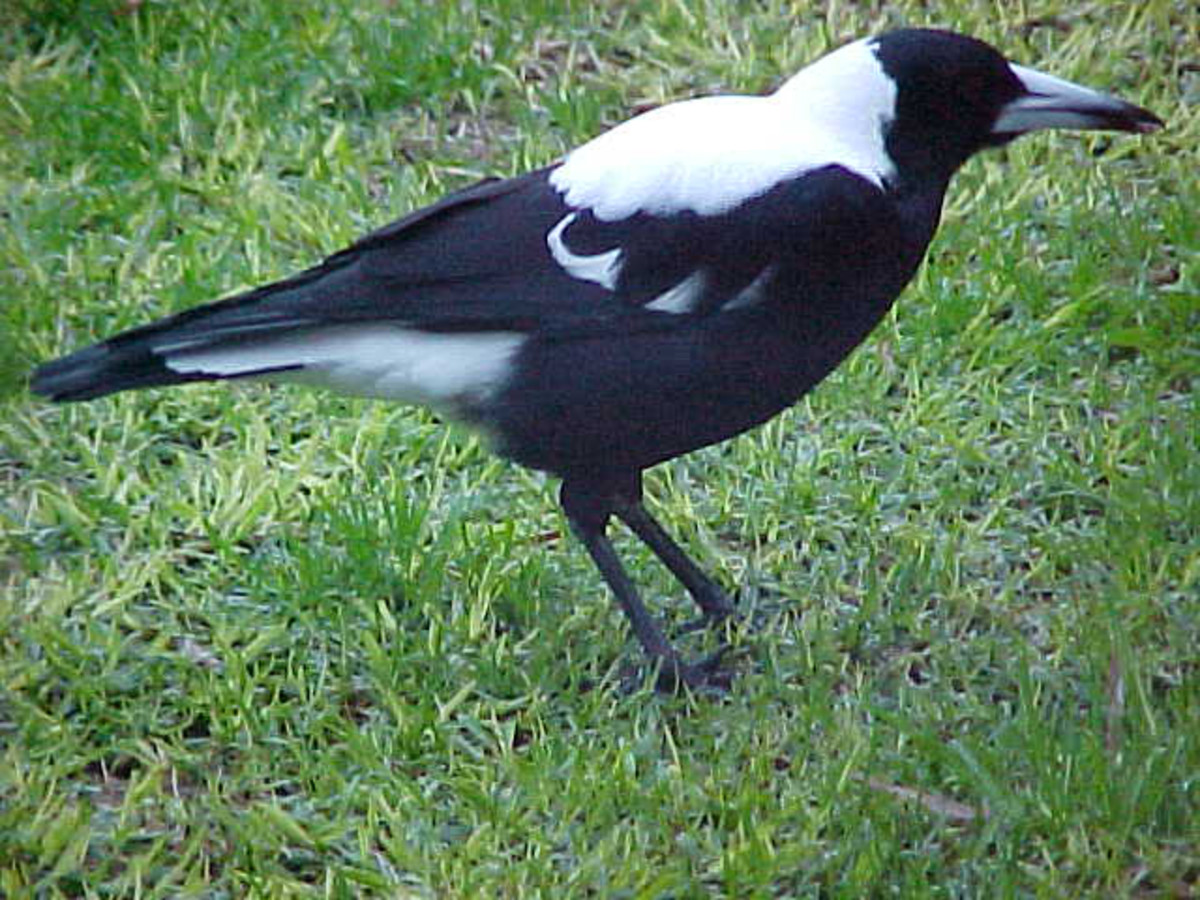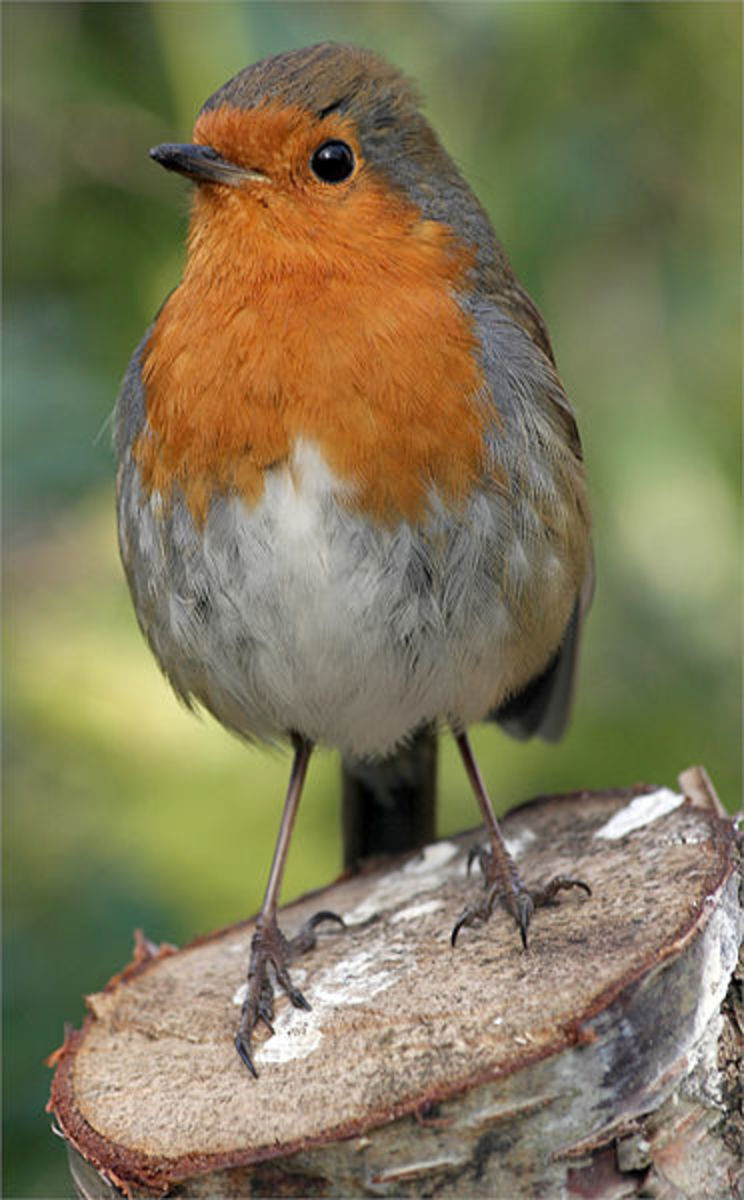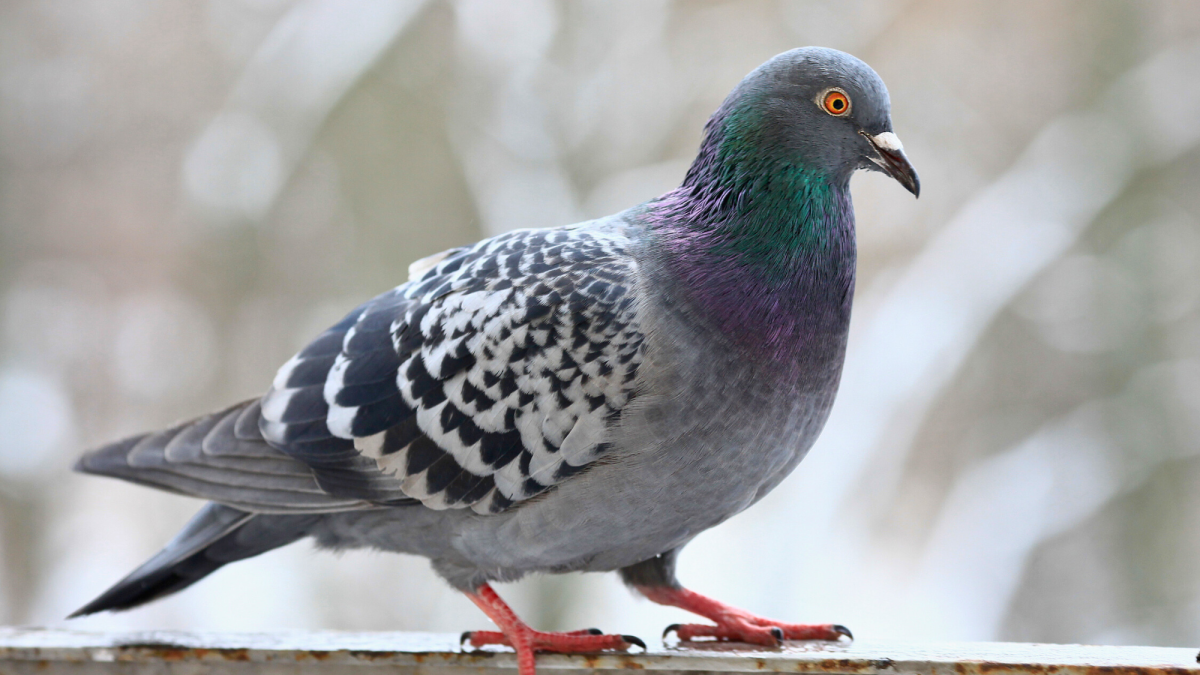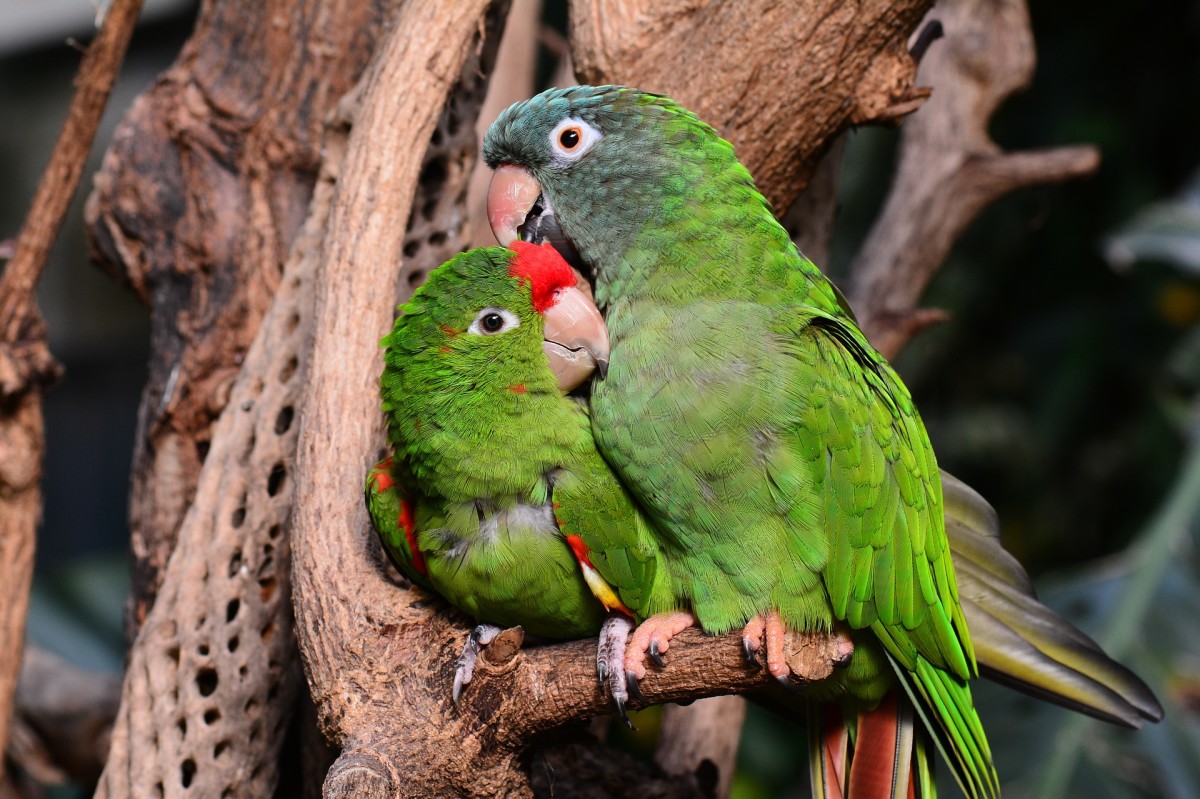Why Do Birds Migrate?
Can’t you just picture it? A little bird in its hammock swinging in the tropical breeze while it sips a pina colada. Now why on earth would that silly bird want to leave such a beautiful, warm place; exhaust itself flying thousands of miles in some instances to get back to the cold springtime of the northern climes? What is it, crazy?
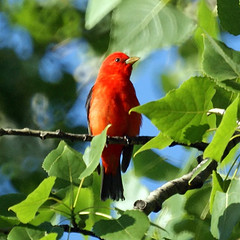
Actually there are many valid reasons for leaving 'home' when it comes time to breed.
It's not all sun, sand and tropical fruit. Birds have to compete with year round residents that have adapted to their own environment. The native birds know the best food sources, and they guard them with great zeal. They are also keenly aware of their territory and the best nesting sites. Strangers are quickly and vehemently dispatched from those areas!
The warmer the environment, the more likely it will harbor abundant parasites and nasty diseases that might harm the un-naturalized northern visitors should they opt to stay rather than migrate northward.
Birds' immune systems can quickly become overwhelmed and compromised when exposed to foreign infectious bacteria and viruses. Because they do not live in the warmer climates all year, immunity becomes an issue.
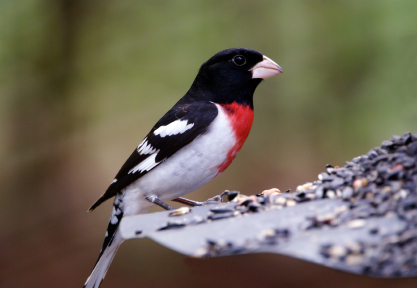
They come home just in time for the insect and plant population explosion. Birds migrating north in spring arrive at the exact right time. Everything is beginning to sprout and turn green. That means that the bugs are happily staking their claims to all of this abundance. Protein in the form of insects and creepy crawlers is necessary for strong, fast growth of baby birds. Timing, as they say, is everything!

Heat is the enemy of baby birds. That's why mama bird can leave the nest to forage for food. She will turn the eggs at least once every day to make sure they are kept at a constant temperature. Northern birds have adapted to springtime temperature swings.
Mama bird has a 'brood patch'. That is a spot on her breast without thick feathers. She places the brood patch over the eggs to sense whether or not they need warming. If so, she dutifully keeps them covered and warm until the eggs have the necessary heat to maintain the young growing inside.
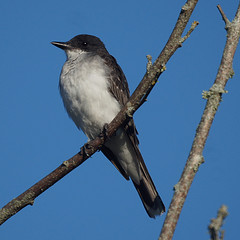
Daylight gradually increases so that foraging for food becomes easier. Southern climates have the same daylight hours most all season. The further north you go, the longer the days become in summertime. Also, different plants bloom at different times, Along with these varied flowers, seeds, nuts and berries come the insects that use the plants as hosts and food for their larvae. The amount and variety of food available helps our backyard birds to thrive.
So how do our feathered friends know when its time to leave?
1. The length of daylight hours triggers a release of certain hormones that tell a bird's body "it's time to store fat for a long journey".
2. Growing new more streamlined feathers helps to cut down on drag and improve aerodynamics while flying long distances.
3. Because natural predators like hawks are much less likely to hunt at night, songbirds use the nighttime hours for a safer flight.
4. Flying at high, cooler altitudes helps keep them from overheating from their constant exertion. They will also encounter tailwinds to help them 'coast' and glide, allowing for rest periods while in flight.
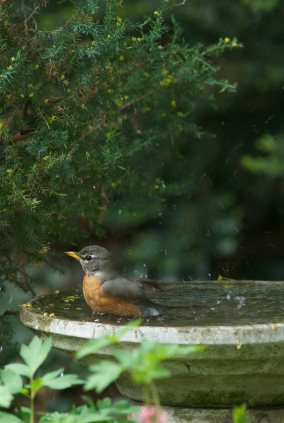
Robins generally migrate from dozens of miles up to a thousand miles away from their summer breeding grounds.
Depending upon the season, not all birds migrate that far from where they were born and raised. Sometimes they go no further than a couple of states away, just to find a warmer climate. It doesn’t have to be tropical.
Still other birds fly all the way from the frigid arctic southward in search of food and relief from the bitter cold.
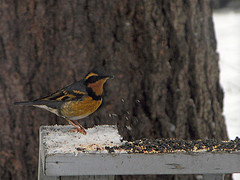
Birds like the Varied Thrush migrate East to West. This robin-like bird is native to the Pacific Northwest, but spends its winters in the midwestern states. It aggressively defends its territory by turning its back on an intruder and lifting its tail up!
Click here to listen to it's strange buzzing call.
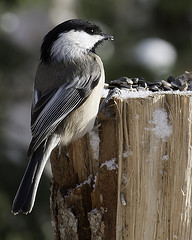
My chickadees here in the northeast choose to stay all winter long. I welcome their cheery, friendly behavior. Whenever I add new foods to the bird feeder, they are the first to investigate!
Still other chickadees migrate from east to west and back again.
Chickadees readily accept manmade bird houses as long as the entrance hole is 1-1/4" to 1-1/2" in diameter.
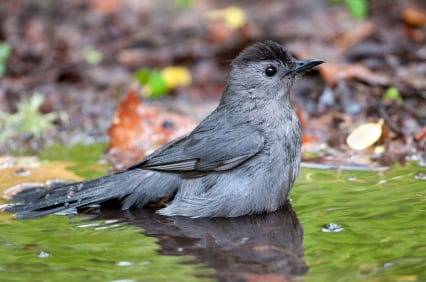
Catbirds migrate from the southern states northward to Pennsylvania and into New England in early summer.
Once in awhile there is what is called an irruption. That is defined as a bird population arriving in a completely different habitat than it normally prefers
This happened recently with a large flock ofsnowy owls, whose 'home' is in the frozen arctic.
Snowy Owl Irruption

How do they navigate?
Most birds migrate in the spring and the fall. They use the stars, moon and/or sun to help them find their way. Migratory birds have built-in magnetic receptors that help them orient their flight plan to the magnetic impulses emanating from the earth.
Other birds follow flyways that have been established over milennia, and which have also been genetically programmed into their behavior. Some travel long-established migratory routes and can recognize geological landmarks.
Still others of our feathered friends use the sun and/or stars by which to find their way to and from their destinations. Don’t let that little tiny brain fool you. It is jam-packed with all kinds of built-in survival tactics, the extent of which I suspect we are just now learning about.
North American Migration Flyways
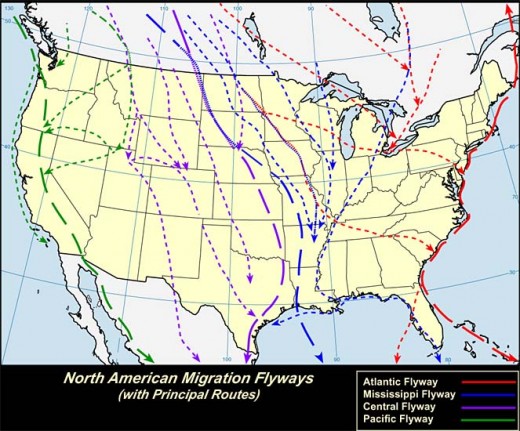
There are hazards along the way. The excessive light from cities distorts their star navigation abilities. Sadly some become disoriented and lost. Storms and bad weather account for more fatalities, blowing birds off course. They can lose their way and perish.
Of course, predators of the 4-legged variety such as wild dogs, cats and others are always a threat, as well as hunters.
Collisions with high buildings, windows, wind turbines, aircraft and vehicles account for a very large percentage of unsuccessful migration treks.
Because our human habitat is constantly expanding, what once was a great stopover for exhausted, hungry birds in some cases has turned into a housing development. Unable to find adequate food and water accounts for another high mortality rate in birds trying to get home.
Researchers continue to tag and monitor migrating birds to study their routes and the dangers they may face along the way.
It is estimated that a staggering ONE BILLION birds never complete their journeys. A sad fact that thankfully is being addressed by some larger cities and universities. Research continues to help our little flyers have a better chance to ‘make it back home’.
There is hope. The links below will take you to some of the many sites detailing the newest programs and radar systems being tested and implemented to make bird migration safer. Their goal is to find ways to prevent these needless and tragically high bird mortality rates.
You Might Be Interested in Checking Out Further Information on this Subject
- United States Air Force Avian Hazard Advisory System
A geospatial predictive risk model supporting United States Air Force pilots, airspace planners, schedulers, and environmental planners. - Reducing Migratory and Local Bird Collisions on Large Glass Expanses: Pilot Study on Beury Hall |
- Wabash Valley Audubon Society
Bird Safe Building Guidelines - MERLIN Aircraft Birdstrike Avoidance Radar system - Bird strike Radar - bird strike risk and BASH ma
MERLIN Aircraft Birdstrike Avoidance Radars for real-time detection, tracking and avoidance of hazardous bird activity at commercial airports and military airfields - BirdSafe Research | Minnesota
- Division of Migratory Bird Managment -
This document provides an overview of the role and responsibilities of the Division of Migratory Bird Management within the U.S. Fish and Wildlife Service. The Migratory Birds Program: Providing Global Leadership in the Conservation and Management of

